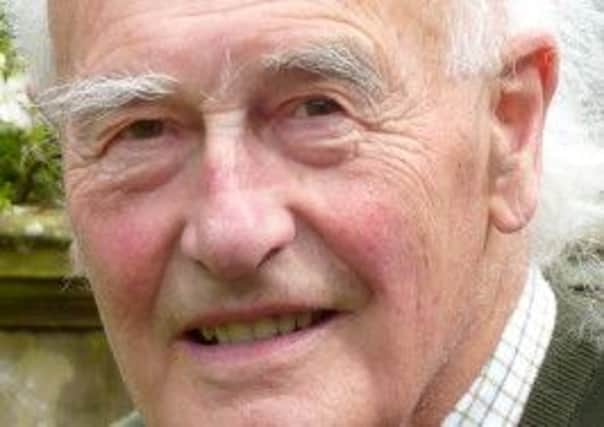Obituary: Dr David Wilkie, DSc FRSS, physicist


Dr David Wilkie was an eminent physicist whose work embraced a range of scientific fields from rocket fuel to nuclear power, medicine and epidemiology.
Though he spent most of his career in the atomic energy industry at Sellafield nuclear power plant, his statistical expertise was in wide demand and, when he returned to his native Scotland, his experience of experimental work made him invaluable to the Saltire Society whose Edinburgh branch he chaired and where he made a unique contribution to its science award panel.
Advertisement
Hide AdAdvertisement
Hide AdA passionate Scot and a man who believed that people never stop learning, his hero was the physicist James Clerk Maxwell. Appropriately, when awarded an honorary appointment to Edinburgh University’s physics department, the location was the Clerk Maxwell building.
A miner’s son, from the Fife town of Buckhaven, his academic ability was evident at Buckhaven High School where he also excelled as a sprinter and footballer. He was almost signed for East Fife juniors but, after leaving school, went to St Andrews University where he graduated with a BSc in natural philosophy.
He then spent a year working on rocket fuel for the Bristol Aeroplane Company before embarking on further studies at Imperial College London where he researched supersonic flow and completed his doctorate.
In 1956 he began work at the then Windscale Nuclear Power Station in Cumbria, later known as Sellafield, and he and his wife Isobel, whom he had met on an Edinburgh-to-London train, settled in the village of Seascale where they raised a family of four. Despite a reputation within his family as the Indefatigable Father – gained after taking them on a whistlestop tour of as many European sites as possible – he suffered a heart attack at the age of 42. However, in the following 43 years, he continued to pack in a great deal.
Advertisement
Hide AdAdvertisement
Hide AdHe worked at Sellafield until 1990, being responsible for the design and analysis of experimental work. This utilised his skill in statistics and later earned him a DSc from the his alma mater, St Andrews. He became a Fellow of the Royal Statistical Society and when reports surfaced about clusters of leukaemia round Sellafield he devised a scientific method of statistical analysis to investigate the claims.
After similar reports of leukaemia clusters around the Dounreay nuclear facilities in Caithness, British Nuclear Fuels Ltd asked him to be its chief expert witness for the defence. As a result he became interested in the study of the patterns, causes and effects of health and disease conditions in defined populations. He went on to become head scientist for the Heat Transfer Lab, attending heat transfer conferences around the world, and, in retirement, continued as a consultant in heat transfer, statistics and epidemiology. He also produced and critiqued many scientific papers during his long career.
He would comment that people quip: “It’s not rocket science” or “It’s not nuclear physics” – flippant phrases to most of the populace perhaps but, as an industrial scientist, he had been involved with both and he took the discipline of scientific investigation most seriously.
Naturally modest, he believed in excellence, always striving to be the best he could be. These attributes, plus his critical approach and wide-ranging experience were qualities greatly valued by the Saltire Society, which he and his wife joined after returning north and retiring to Edinburgh.
Advertisement
Hide AdAdvertisement
Hide AdHe quickly became a member of its development committee and science award panel and was appointed chairman of the capital’s branch in 1993 and a member of the society council the following year.
In 2010 he and Isobel, who were said to be “the epitome of everything that is good about the Saltire Society”, were made honorary members, an accolade he described as “gobsmacking”.
His other interests included reading, his garden, opera, theatre and his church – he had been involved in the Methodist church in Seascale and was an active member of Edinburgh’s Palmerston Place Church.
He is survived by his wife, with whom he celebrated their diamond wedding anniversary last December, his children Deborah, Nigel, Fergus and Edwin, seven grandchildren and his sister Irene.